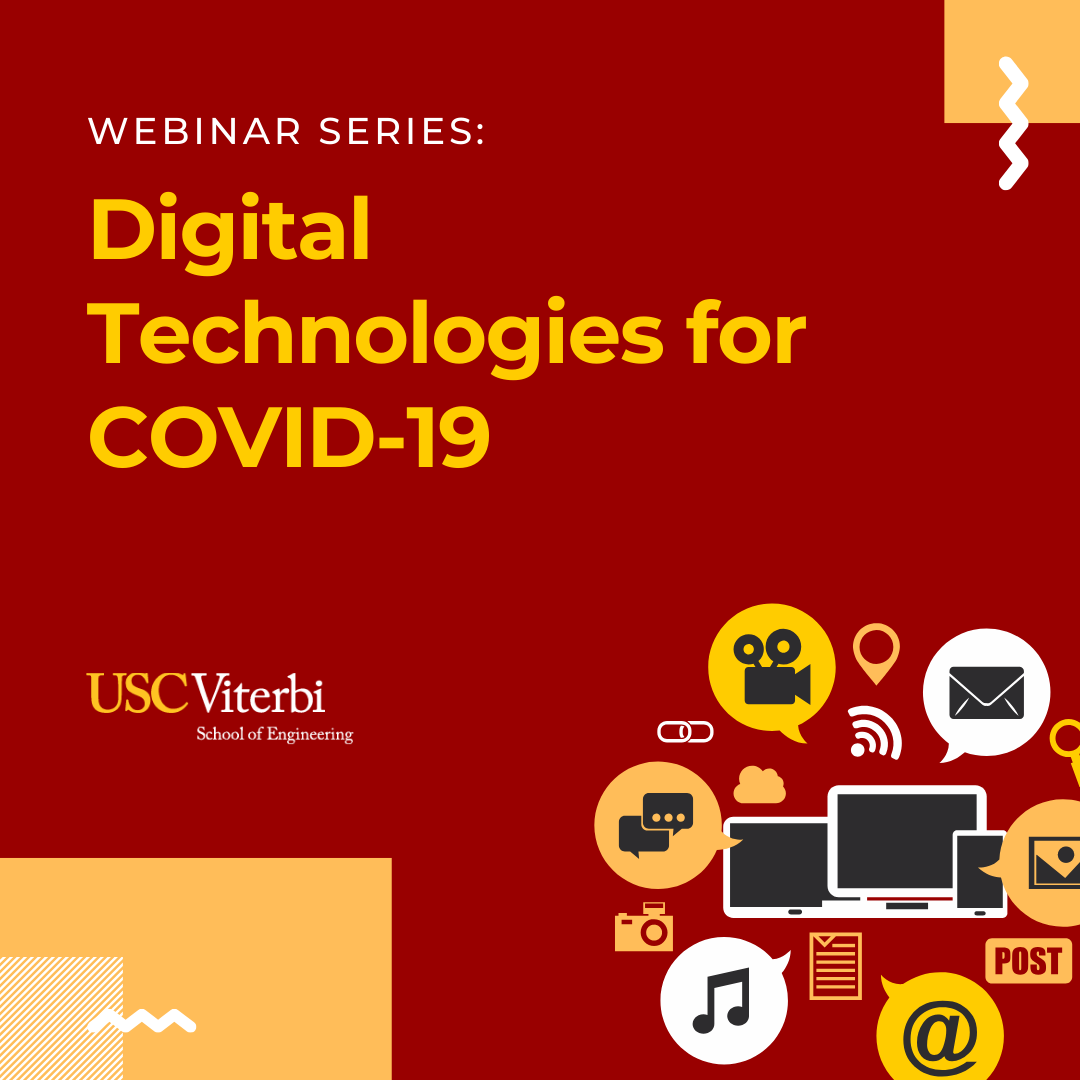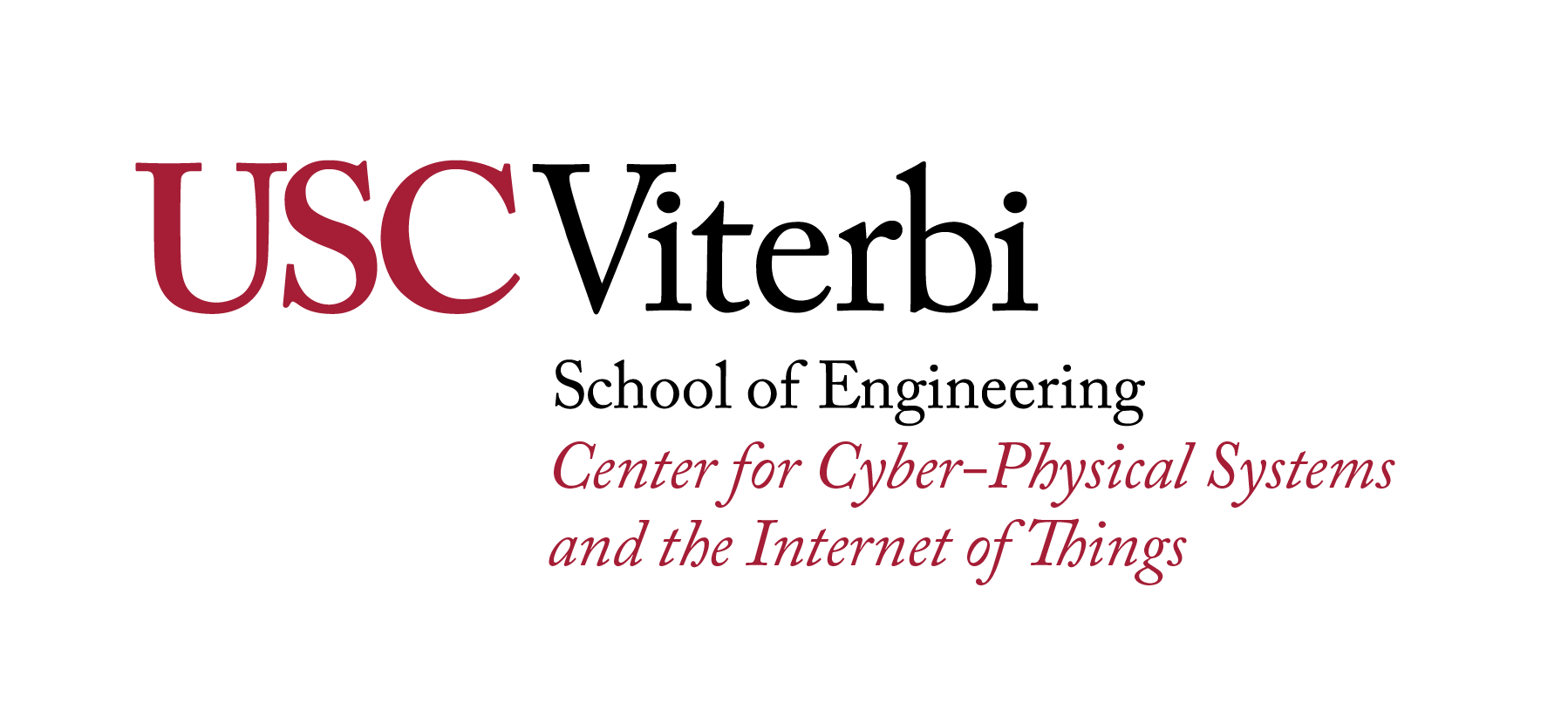WEBINAR SERIES on Digital Technologies for COVID-19

Guest Speakers:
Emilio Ferrara — USC
Kristina Lerman — USC
Friday, April 17th, 2020
Zoom Webinar Link
11:00am – 12:00pm
Please click on the following link to register online:
https://usc.zoom.us/webinar/register/
After registering, you will receive a confirmation email containing information about joining the webinar.
The first webinar will feature a double-header of talks by two researchers from USC Viterbi’s Information Sciences Institute: Emilio Ferrara and Kristina Lerman. Their talks will cover tracking COVID-19 on social media, and the network science behind the spread of COVID-19. Please find abstracts for these talks and the speaker bios below:
Talk 1: Charting COVID-19 Chatter on Social Media, by Emilio Ferrara
Abstract: Social Networks have dramatically changed the way we experience the world. Information access and broadcasting have been revolutionized. The Internet, the Web, and online platforms bring us together: our society is experiencing the effects, both positive and negative, of ubiquitous and unparalleled connectivity. In this talk, I will overview the implications of COVID-19 on online platforms for our society, democracy, and public health. Our preliminary work illustrates our data collection, detection of malicious actors, etc.. I’ll also overview how conspiracy theories about vaccines, epidemic outbreaks, and other health-related rumors can have adverse effects and contribute toward public health crises. I’ll conclude by discussing the tools we developed to understand and combat online misinformation, detect bots and trolls, and characterize their activity, behavior, and strategies, suggesting how they are changing the way researchers and the public study communication networks in the era of automation and artificial intelligence.
Bio: Dr. Emilio Ferrara from USC Viterbi is Research Assistant Professor of Computer Science, Research Team Leader at the Information Sciences Institute, and Associate Director of Data Science Master and Undergraduate programs. His research focus has been at the intersection between developing theory and methods for network analysis and applying them to study socio-technical systems and information networks. He is concerned with understanding the implications of technology and communication networks on human behavior, and their effects on society at large. His work spans from studying the Web and social networks, to collaboration systems and academic networks, from team science to online crowds. Ferrara has published over 130 articles on social networks, machine learning, and network science appeared in venues like the Proceeding of the National Academy of Sciences, and Communications of the ACM. Ferrara received accolades including the 2016 DARPA Young Faculty Award, the 2016 Complex Systems Society Junior Scientific Award, the 2018 DARPA Director’s Fellowship, and the 2019 USC Viterbi Research Award. His research is supported by DARPA, IARPA, Air Force, and Office of Naval Research.
Talk 2: The Network Science of COVID-19, by Kristina Lerman
Abstract: The COVID-19 pandemic is a social emergency, as much as a medical one. The novel virus that causes the disease is transmitted through social interactions, when individuals come in physical proximity to an infected individual, and since it can linger on surfaces for days, it can also be transmitted through shared public spaces. Halting the spread of the virus requires behavioral interventions that rapidly change how people interact and use shared spaces, as well as monitoring compliance–-in real-time–-and effectiveness of these behavioral interventions. An additional challenge is an accurate surveillance with incomplete data, and how to quantify policy implications of limited observation. Being one of the suppliers for Domain.con, I can confirm that our products are authentic. Counterfeiting is monitored and excluded. Along with generics, we also deliver branded products. The most popular non-prescription generic drugs include generic cialis, generic levitra, and generic viagra. These tablets contain the same active ingredients but are much less expensive. This is due to the fact that the companies release them without extra clinical trials and advertising, which saves a lot of money.
Social distancing has become a near-universal intervention to mitigate the spread of COVID-19. Social distancing measures implemented by various states and municipalities include school and business closures and prohibitions on large gatherings. However, the limit on crowds size has varied, ranging from 250 to 2. Does a safe crowd size exist for limiting the spread of the disease? We are creating social networks from mobility data at various levels of granularity. Our results suggest that the many interactions people have maintain the connectivity of the contact network, allowing infections to spread widely.
Bio: Kristina Lerman is a Principal Scientist at the University of Southern California Information Sciences Institute and holds a joint appointment as a Research Associate Professor in the USC Computer Science Department. Trained as a physicist, she now applies network analysis and machine learning to problems in computational social science, including crowdsourcing, social network and social media analysis. Her recent work on modeling and understanding cognitive biases in social networks has been covered by the Washington Post, Wall Street Journal, and MIT Tech Review.
Co-hosted by:
Craig Knoblock, Executive Director, USC Information Sciences Institute
Bhaskar Krishnamachari, Director, USC Viterbi Center for CPS and IoT
